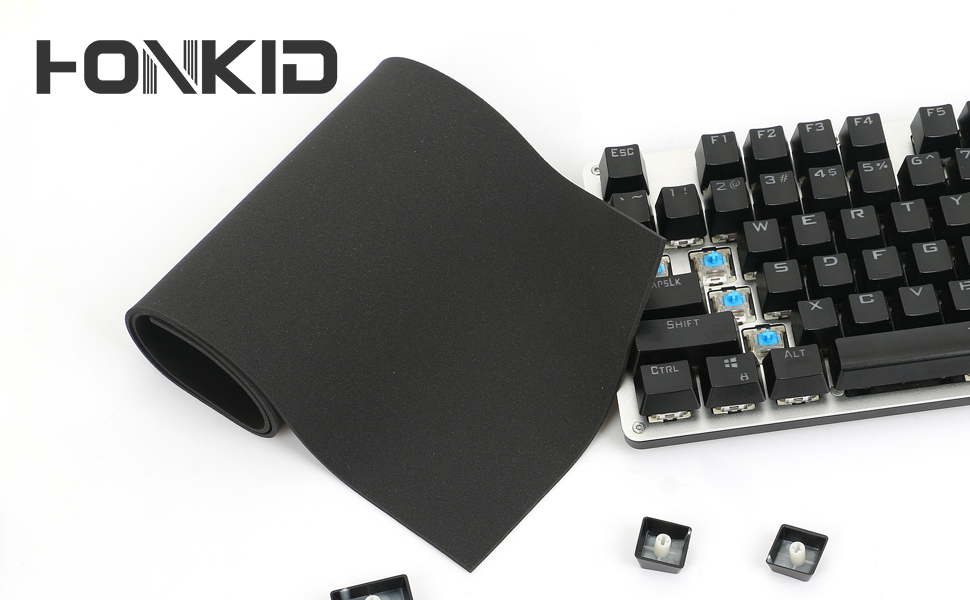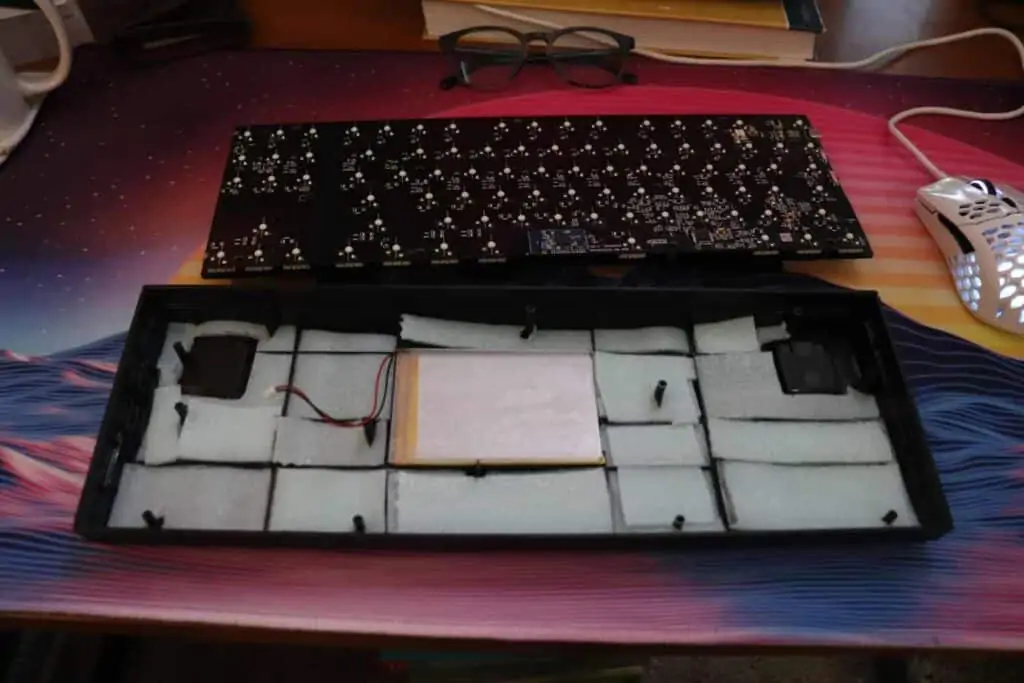🔇 10 Easy Ways to Make Your Mechanical Keyboard Quieter at Home
Love the feel of a mechanical keyboard but hate the click-clack noise it makes? You’re not alone. The good news is—you don’t need to buy a new keyboard to fix it. With a few simple tweaks, you can dramatically reduce the sound and keep that satisfying typing experience.
Here are 10 effective ways to quiet your mechanical keyboard, from beginner-friendly tips to more advanced mods!
1. Use a Desk Mat or Large Mouse Pad
Placing your keyboard on a soft desk mat helps absorb vibrations and prevents sound from bouncing off your desk surface. It’s one of the easiest and cheapest ways to make an instant difference.

2. Clean Your Keyboard Regularly
Dust and debris stuck under the keycaps can cause rattling or uneven keystrokes. Gently clean your keyboard using a brush or compressed air to keep it smooth and quiet.
3. Install O-Rings for Noise Dampening
O-rings are small rubber rings placed under each keycap. They soften the impact when you bottom out a key, reducing the loud thud sound. This is a great first step for beginners.
4. Lube Your Switches
Lubricating your mechanical switches reduces internal friction and eliminates unwanted sounds like spring ping or scratchiness. Avoid lubing clicky switches unless you want to mute the click.
5. Add Case Foam or Sound Dampening Foam
Foam placed inside your keyboard case helps absorb internal vibrations and echoes. This mod makes a noticeable difference in both feel and sound—especially for budget boards with hollow plastic cases.

6. Stabilizer Mods (Band-Aid, Clip, Lube)
Stabilizers (used for longer keys like spacebar and shift) are often the noisiest part of a keyboard. Modding them by clipping, lubing, or using Band-Aid mods can greatly reduce rattle and improve key stability.
7. Switch to Silent or Linear Switches
Clicky switches (like Cherry MX Blue) are loud by design. Swapping them out for linear or silent switches (like Gateron Silent Reds) can cut the noise significantly while still keeping your keyboard mechanical.
8. Upgrade to Thicker, Quieter Keycaps
Keycap material matters! PBT keycaps tend to be thicker and more sound-absorbing than ABS, resulting in a deeper, quieter typing sound. You can also look into foam-filled or silicone-dampened caps.
9. Choose a Quieter Case or Plate Material
Some cases and plates amplify sound more than others. Consider switching to a plastic case or a gasket mount design that uses softer materials to absorb keystroke noise.
10. Build with Gasket Mount Structure
If you’re diving into custom keyboards, try a gasket mount layout. These designs use rubber gaskets between the plate and case to absorb shock and produce a soft, muted typing sound.
✅ Final Thoughts
Whether you're new to mechanical keyboards or a long-time enthusiast, making your keyboard quieter doesn’t have to be complicated. Start small with a desk mat and O-rings, then level up with mods like lubing or case foam. You’ll notice the improvement right away—more comfort, less noise, and all the feel you love.
🔎 Quick Summary:
-
Just starting? Desk mat + O-rings = great combo.
-
Want smoother keys? Try lubing your switches.
-
Hate loud clicks? Go silent with linear switches or foam mods.
Need help choosing the right O-rings or want a full guide on lubing your switches? Let us know—we’d love to help you upgrade your keyboard game!














